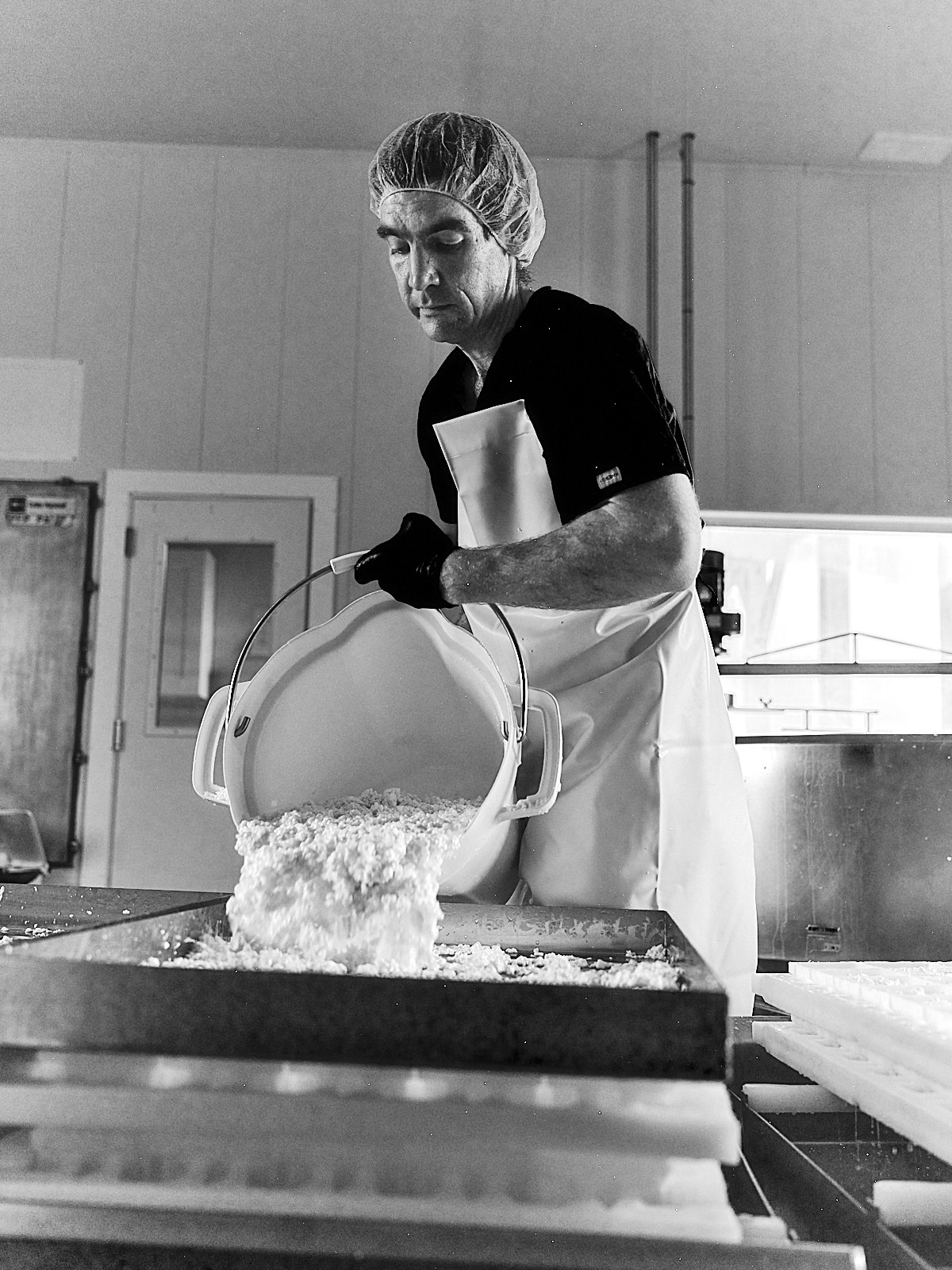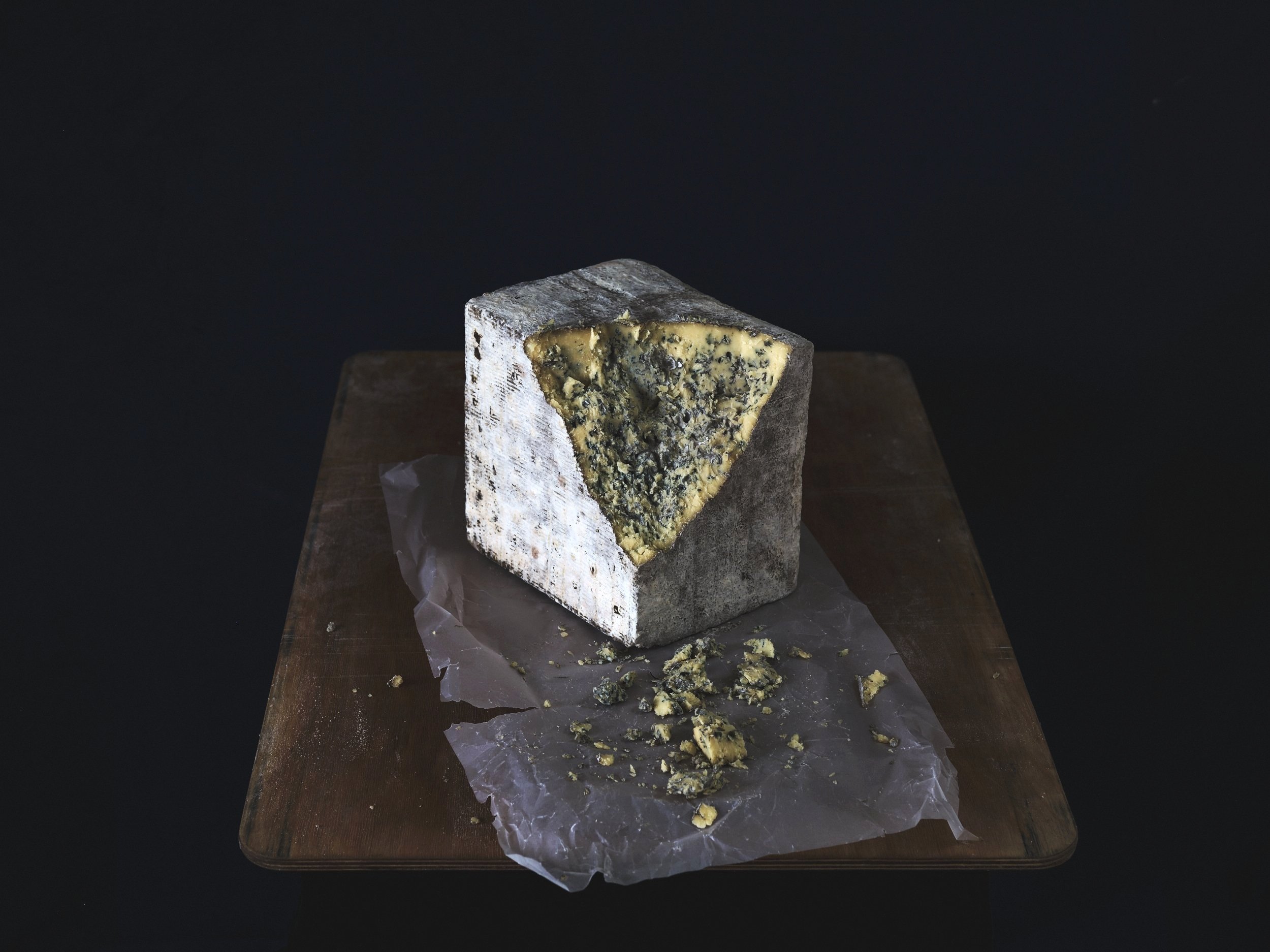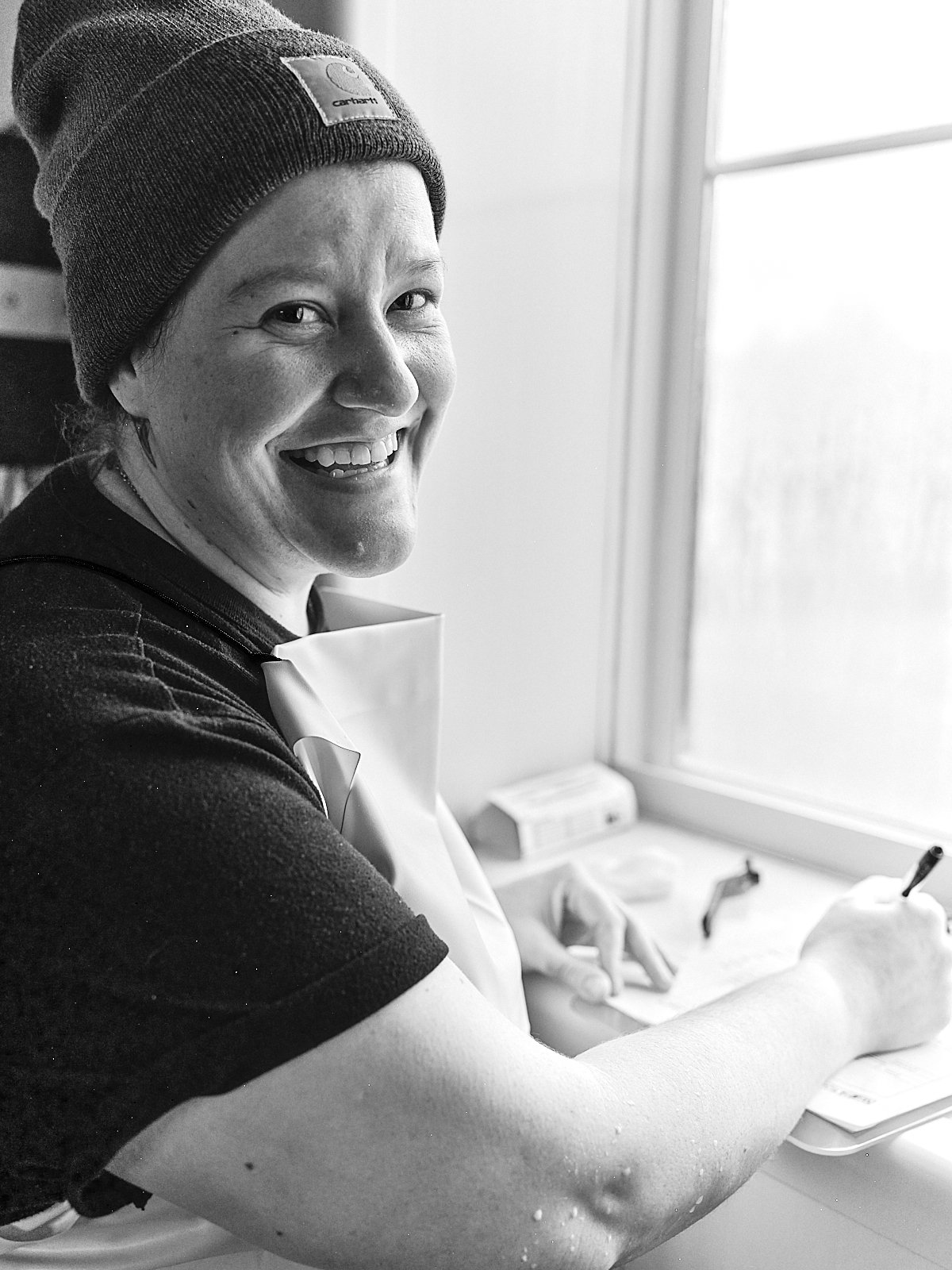Bluebird Reserve
Cow’s Milk Mature Blue Cheese
Our mature Bluebird Reserve, aged for at least six months, is a testament to our commitment to the perfect cheese. You can see that the vibrant, yellow-hued paste of Bluebird Reserve is a direct reflection of the milk from our grass fed, certified organic dairy herd. It is a distinct expansion upon our original Bluebird Blue Cheese. Characterized by an intensified flavor profile, Bluebird Reserve reveals deeper blue viewing and a crystalline texture that evokes delectably toasted caramel resulting in a cheese that is robust, full-bodied, and truly one-of-a-kind.
Bluebird Reserve boasts a creamy, full-flavored finish that marries a distinctive blue tang with a signature sweetness, creating a sensory experience that lingers on the palate. A decadent experience of toasted caramel sweetness, accompanied by delightful crunchy crystals that add a playful texture. The fudgy texture, paired with pronounced blue veining, creates a delightful contrast that adds depth to the overall tasting experience. The interplay of creaminess and smoothness on the palate contributes to a luxurious sensation, making each bite a moment of pure indulgence.
Bluebird and Bluebird Reserve commence their journey in a similar fashion. Following milking, we transfer the milk to the creamery and initiate the process of cheesemaking by heating it and adding starter cultures. Rennet is then introduced, leading to the coagulation of milk proteins. Large cheese knives cut the coagulated milk into curds and whey, defining the curds' size and shape. These curds, the foundation of the cheese, are stirred, sometimes cut further, facilitating the separation of whey—the liquid component of milk.
After the wheying off (a process of separating the curds from the whey) we are left with a crumbly curd that we gracefully "pitch" (a charming cheesemaking term for poured) into square hoops. Once the cheese is placed in its hoops, it undergoes a meticulous flipping process, lasting hours to days. The expertise of our cheesemakers is crucial in every step. After the drying process, our cheeses are gently released from their hoops and undergo the delicate process of hand salting each young cheese with sea salt. Subsequently, we place them in our brine room, where the alchemy of blue development begins.
Around the 11th day, as the natural rind begins to form on the outside of each eight pound wheel of cheese, we use a unique tool that delicately pierces the cheese deep into its interior. This gentle puncturing serves as an invitation for oxygen to infuse the core of the cheeses, fostering the intricate veining and nurturing the growth of the blue mold. Each wheel is turned twice a week as they mature, ensuring a balanced and even development of their unique qualities; those select wheels earmarked for the Reserve designation are granted an extra 3+ months of patient aging. This extended duration is a deliberate choice by our cheesemakers, allowing these exceptional cheeses the time they need to cultivate a depth of flavor and character that sets Bluebird Reserve apart as a truly distinguished culinary delight. She is a cheese that combines the best of bold blue veining, a sumptuous creaminess and sweet fudgy richness.
Pairings
Take blue cheese but magnify it by…age and intensity. That’s Bluebird Reserve. What could we possibly drink with that? (That was a rhetorical question.)
Orange Wine
Our first suggestion is orange wine. Orange wines are made using a white grape and leaving the juice to ferment with the grape skins, creating a color anywhere from a subtle copper to a vibrant traffic-cone orange. These full-bodied wines make them a food-friendly pick, and we gasped with joy when we tried the 2021 Sassara Bianco Vin de Anfoa from the Veneto region of Italy with a forkful of BR. The nutty, savory flavors of the wine brought out the worn leather and sweet, creamy butterscotch notes of the Bluebird Reserve. Orange wines are made throughout the world but we look to Italy (Tenuta Santa Lucia), France (Mas Theo, Francois Ducrot), and the U.S. (Donkey & Goat, Stolpman Vineyards). This is definitely a wine to ask your local wine shop about and try a few to see which style you prefer.
Cabernet Sauvignon
The other go-to pairing for this big blue is a Late Harvest Cabernet Sauvignon. Most often made in California from grapes left longer on the vine to concentrate their flavor, they have the backbone to hold up to the tangy cheese. Caramel and dark fruit elements of a late harvest red wine do a flavor tango with the fudgey texture of Bluebird Reserve. All you need is a chilly day and a roaring fireplace to complete the experience. (Look for bottles from Little Vineyards, Baldacci Vineyards, and Far Niente in California.)








